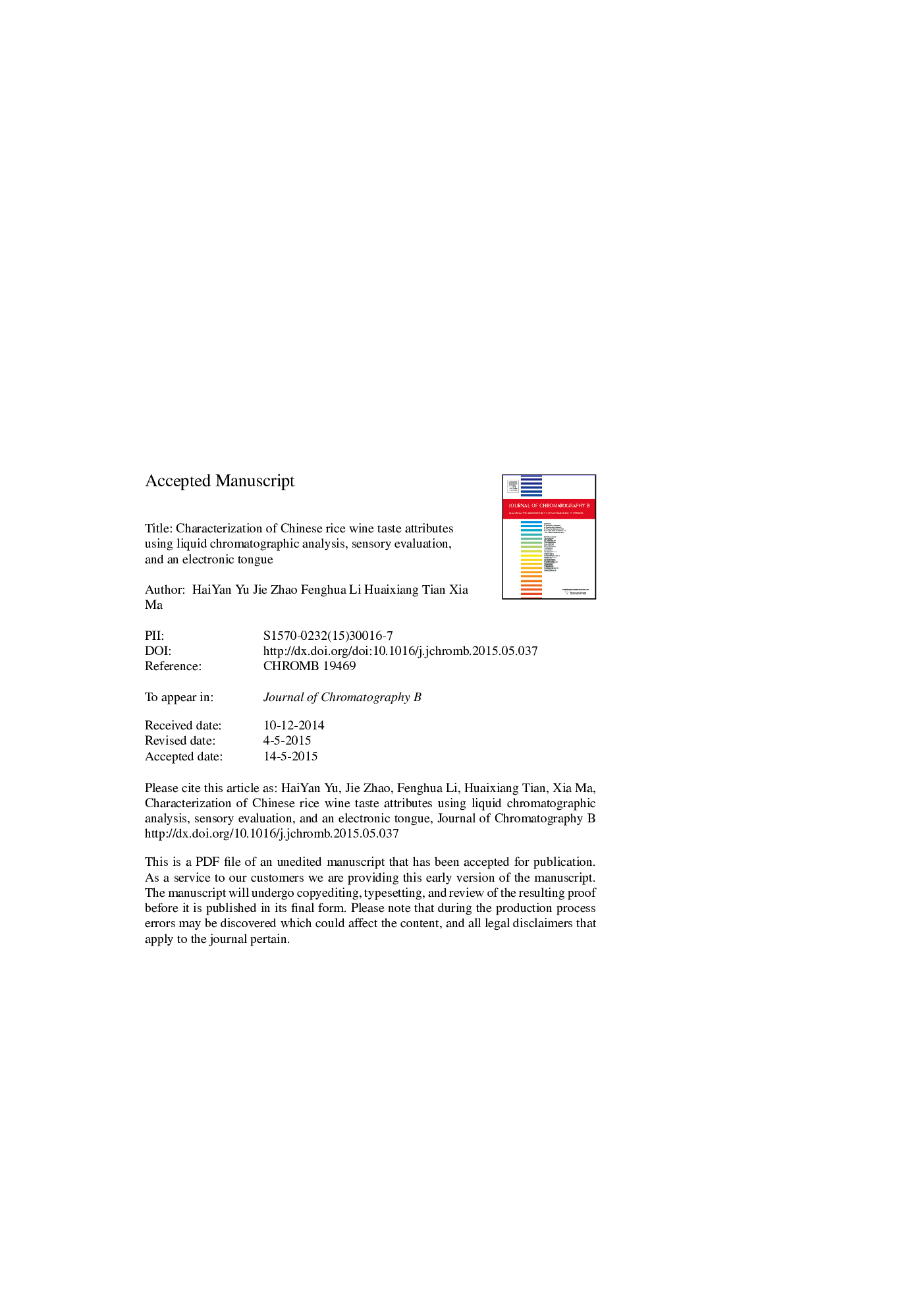| Article ID | Journal | Published Year | Pages | File Type |
|---|---|---|---|---|
| 7617014 | Journal of Chromatography B | 2015 | 31 Pages |
Abstract
To evaluate the taste characteristics of Chinese rice wine, wine samples sourced from different vintage years were analyzed using liquid chromatographic analysis, sensory evaluation, and an electronic tongue. Six organic acids and seventeen amino acids were measured using high performance liquid chromatography (HPLC). Five monosaccharides were measured using anion-exchange chromatography. The global taste attributes were analyzed using an electronic tongue (E-tongue). The correlations between the 28 taste-active compounds and the sensory attributes, and the correlations between the E-tongue response and the sensory attributes were established via partial least square discriminant analysis (PLSDA). E-tongue response data combined with linear discriminant analysis (LDA) were used to discriminate the Chinese rice wine samples sourced from different vintage years. Sensory evaluation indicated significant differences in the Chinese rice wine samples sourced from 2003, 2005, 2008, and 2010 vintage years in the sensory attributes of harmony and mellow. The PLSDA model for the taste-active compounds and the sensory attributes showed that proline, fucose, arabinose, lactic acid, glutamic acid, arginine, isoleucine, valine, threonine, and lysine had an influence on the taste characteristic of Chinese rice wine. The Chinese rice wine samples were all correctly classified using the E-tongue and LDA. The electronic tongue was an effective tool for rapid discrimination of Chinese rice wine.
Keywords
Related Topics
Physical Sciences and Engineering
Chemistry
Analytical Chemistry
Authors
HaiYan Yu, Jie Zhao, Fenghua Li, Huaixiang Tian, Xia Ma,
